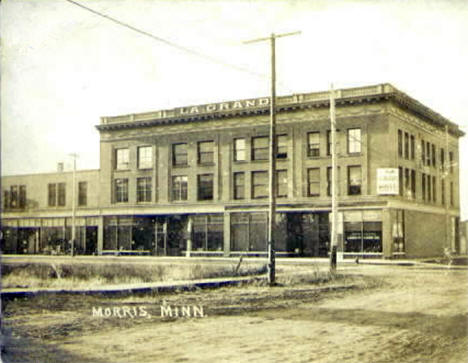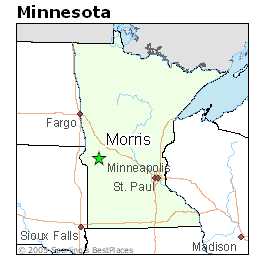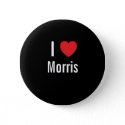 The La Grand Hotel was once a grand landmark of west Morris.
The La Grand Hotel was once a grand landmark of west Morris.
Morris veered away from that design and clearly established its main street to the east. Atlantic Avenue became where all the retail shopping activity we associate with "main street" sprouted.
It was possible to charge for parking, so popular and essential were the attractions of main street. I remember pushing coins into parking meters.
In the early 1980s I wrote about the government "Main Street" program that was supposed to keep the traditional main street vital. I'm afraid this was the typical unrealistic government program.
Ron Meiss was hired to run it here. Ron was a very pleasant and articulate fellow to run across. I'm sure he did all he could in the role.
There was a big presentation at Edson Auditorium (UMM) that featured some non-local Main Street representatives. I'm not so generous in how I would describe them.
One of them poked fun at a piece of artwork in front of Morris State Bank. That's the bank known as Bremer today. It was a snarky comment and uncalled-for.
Judging art is notoriously subjective. One man's art is another man's junk. When I was in college I felt there was nothing more worthless in the world than a freshmen-level art class.
It seemed insulting to me for a bureaucratic individual to come here and pooh-pooh a local bank's gesture for providing public art. Best described as a stone sculpture, this art showed up in a slide presentation.
"I'm not saying I don't like it, I just don't understand it," he said.
What you're saying is you don't like it, you fool.
Alas, our society was a sucker for some of the excesses of government in the early 1980s.Ronald Reagan was going to take care of that.
Conservative politicians would say programs like "Main Street" could take a flying leap. Conservatives didn't have the political capital they have now. They could throw rocks from a distance but were largely spectators on lots of things.
The Great Society of LBJ still hung over us a little. We had thought that government programs could do so much to lift us up. "Main Street" was an example of how a good idea could languish, become irrelevant and waste money in practice.
I have to laugh because to the extent local businesspeople seemed supportive, it was for the wrong reason! They just felt that if our esteemed government chose Morris for its Main Street efforts, good things would follow simply because the government wanted a favorable outcome. I heard Bob Stevenson say "it'll be a self-fulfilling prophecy."
Government might pull strings. It wouldn't have anything to do with the grandiose talk of those three individuals who spoke at Edson that night.
One of them must have used the word "facilitate" seven or eight times. "Facilitate" is the height of bureaucratise.
They talked about some common sense ideas for which we certainly didn't need government. One of them was the importance of dressing up the back of your business. That area should be as attractive and inviting as the front, they said.
Nothing wrong with that idea. But if our businesspeople are so clueless they can't grasp ideas like this themselves, we're in trouble.
Of course it turns out that our businesspeople aren't clueless at all. They have always known best.
"Main Street" was a spasm of denial about what was happening to the traditional small town main street. There might have been a popular perception that it was dying. The parking meters did get pulled in the late 1970s.
Change is always disconcerting. We're comforted by things staying the same. The women go shopping on main street while the men go to the pool hall, right?
Well, maybe in Norman Rockwell's America that's the way it was. We had a social and economic ecosystem that made sense then. We eventually get dragged through change.
Morris' main street is hardly decaying today. It's just different. It's more low-key. The density of people traffic is less.
But it still definitely lives up to the name "business district."
It's nice to see some things haven't changed like Eul's Hardware. But the pool hall is gone with the wind, like the parking meters.
I am surprised that the institution of the "main street diner" didn't survive here. There is no restaurant that fully fits that description now. Paynesville has two of these: "Tuck's" and "The Wishing Well." How about a nice hot beef sandwich for lunch?
As west Morris developed, it gave up trying to compete with the commercially-oriented east side.
There were a few public attractions there. I'm old enough to remember the La Grand Hotel, the mention of which puts a smile on the face of Morris native turned author Dennis Clausen.
Wells Park is the home of Little League Baseball in summer.
There were a few public attractions there. I'm old enough to remember the La Grand Hotel, the mention of which puts a smile on the face of Morris native turned author Dennis Clausen.
Wells Park is the home of Little League Baseball in summer.
Then we have the Carnegie building. When I was a kid it was the public library. I fondly remember the very stout and capable female librarian who presided. The library was a place to stay quiet.
I can remember her fondly because I don't have to worry about getting "shushed" by her anymore. She got across the message very clear. It was with a quick and decisive gesture: "Shhh!"
I remember checking out a book there called "Rufous Redtail" and being entranced by it. It was a story about a redtail hawk family, giving them human traits - a technique that I believe is called "anthropomorphic." Walt Disney liked it.
The book had an orange cover.
Like so many old buildings, the Carnegie library looked far more impressive from the outside than it was on the inside. Inside it seemed cramped.
The building served its purpose nicely for its time but we would need more space. Eventually, after our old National Guard Armory burned down, the city located a new public library on that spot.
What if the armory hadn't burned? Would it have been razed anyway? Are such fires total "accidents?" Oh, I shouldn't say that but we all think it, like in connection to the fire that destroyed the old Lakeside Ballroom in Glenwood.
Today we see a new state of the art facility on the Lakeside site.
I remember playing elementary basketball in the old Morris armory (under coach Marvin Laabs).
There actually was competition between the east and west sides of Morris for the Carnegie building. On this the west had one of its rare victories. The west won the right with a promise to donate $500 to beautify the grounds.
The grounds? I'm not sure what you'd even call "the grounds" there.
The building itself was striking on the outside. Our Historical Society moved into the building in 1970. Personally I think the Historical Society and museum would have been better served located on the east side.
The west is a wonderful place for residential purposes but it's not a public hub. A glaring weakness is lack of any special parking provisions around the museum.
Put simply there should be a "lot" somewhere close, but instead we have residential streets, somewhat narrow and uninviting, with slopes down to the curb that seem excessive in places.
If you want to park close on the day of a public event there, good luck. You might be tempted to try "parallel parking" between two other vehicles, the way we all learned in driver's education class, but which we all find to be a hassle.
Nick someone else's car and you have to deal with an insurance agent for a couple of weeks.
Forget it, there ought to be some kind of lot basically next to the building.
But there was a need felt to maintain the Carnegie building, grand on the outside but worthless on the inside, so the community approved an expansion project.
The new wing would be capable of housing the museum in full. I would describe the old Carnegie part as negligible and vestigial. It feeds nostalgia is all.
A visitor to the new wing immediately sees a long flight of stairs going up. Of course there's an elevator, but the elevator had to be an appreciable expense for what is essentially a one-story proposition (for the public).
I don't think the residents of west Morris would have cared if the Carnegie building kept a public purpose or not. As long as "the west side" is a nice place to have a home, that's all that matters.
No cemetery chimes, either.
(Image at top of post from "Lakesnwoods.")
(Image at top of post from "Lakesnwoods.")
- Brian Williams - morris mn Minnesota - bwilly73@yahoo.com






















No comments:
Post a Comment